An Ice Escape
- D.E. Bentley –
When we first visited the area where we now live, it was winter, and cold. As we edged our way past Canadice Lake, we could see, dotted across the ice, a village of ice fishing huts. Since then, I have often wondered what—beyond the thrill of being able to walk on water—draws crowds of people to this chilling sport. During a recent drive by of Conesus Lake, I decided to stop and find out.
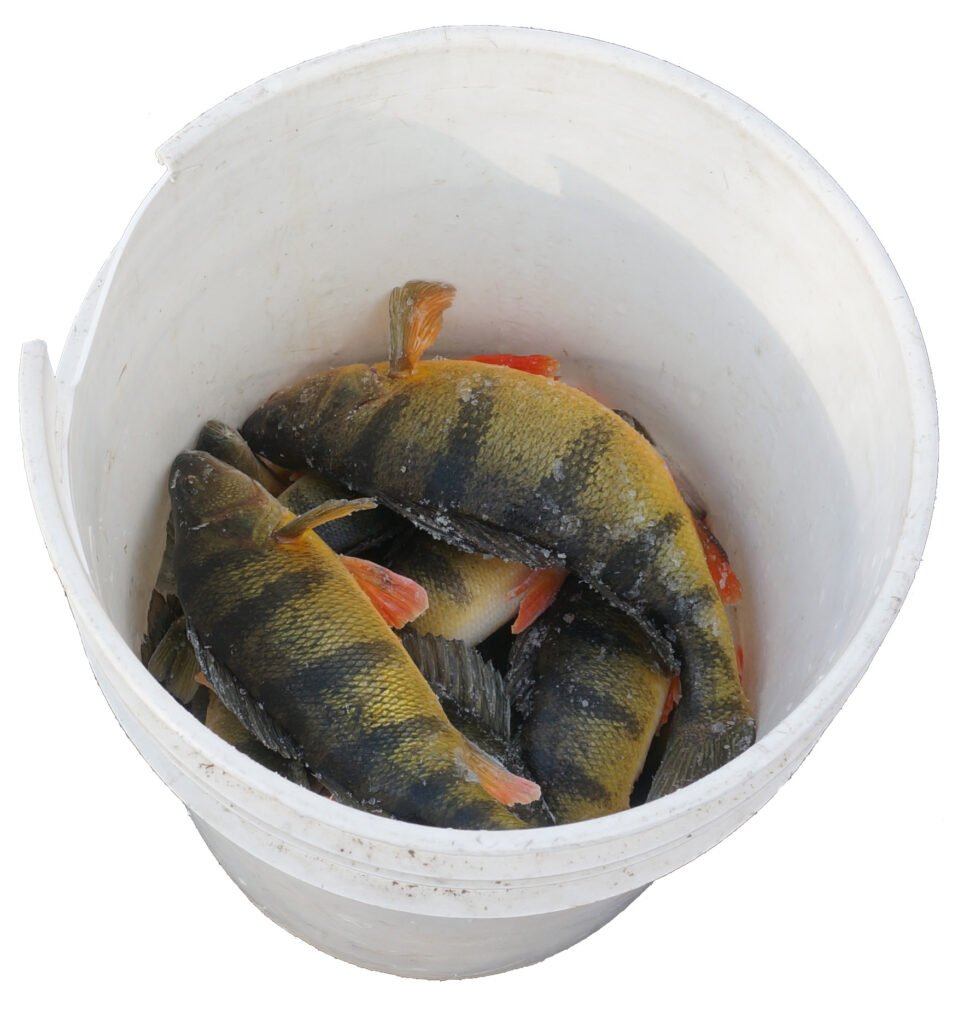
As it turns out, there are a wide range of reasons to venture out. For those not familiar with ice fishing (like me for instance), the basic idea is that instead of catching fish by casting a line into the water from the shore or a boat, you instead drill a hole in the ice and drop hook, line and sinkers into the hole. It gets more complicated and higher tech from there (at least for some people), but that is the basic idea.

Needless to say, there are some safety precautions, to make sure you don’t fall through the ice or die of hypothermia (or both). An obvious first safety step is making sure that the ice is thick enough to support you, and your gear—everything from a sled with the essentials (warm clothes, safety equipment, an ice auger, an ice fishing rod, bait/lures, and a bucket or bag and scoop) to Global Positioning Systems, heaters, huts, and an ATV or pick-up truck. According to FishingBooker blog, thick enough ranges from 4 inches (for people) to 14-16 inches (for full sized trucks). On Conesus when I stopped, there were people and a few ATV’s out on the ices and—according to the first ice angler I encountered—11 inches of ice (I found this out before I ventured out on the lake).
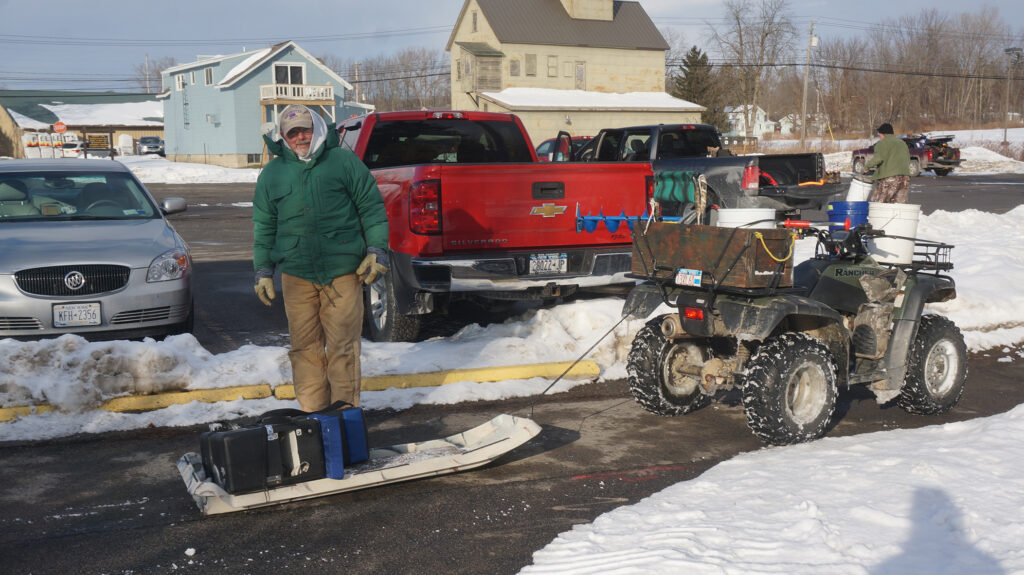
The approaching ATV was driven by Hamlin resident Dan Campbell, who, with a partial bucket of perch to show for his time on the ice, had some luck. For Campbell, the catch is incidental to the experience. It appears that there is no better cure for cabin fever than being out on a frozen lake. It is, simply, something to do in the winter. “If you are here in the winter you have to embrace it.” Campbell was the first to dispel my naïve notion that being out there was a hardship to be endured. He also revealed some of the secrets to his catch, as he moved his gear from his ATV into a nice-looking pick-up truck before driving the ATV up ramps into the back. “I got this truck just for this,” he joked. Everyone I encountered had a great sense of humor about the sport, which might be more accurately described as an art— higher tech and less rugged Than I might have imagined. Most folks out on the ice have huts, heaters, and electronic. Electronics, I inquired further, which resulted in my seeing Campbell’s fish finder (a Garmin in his case), the devises used by many to detect the fish under the ice.
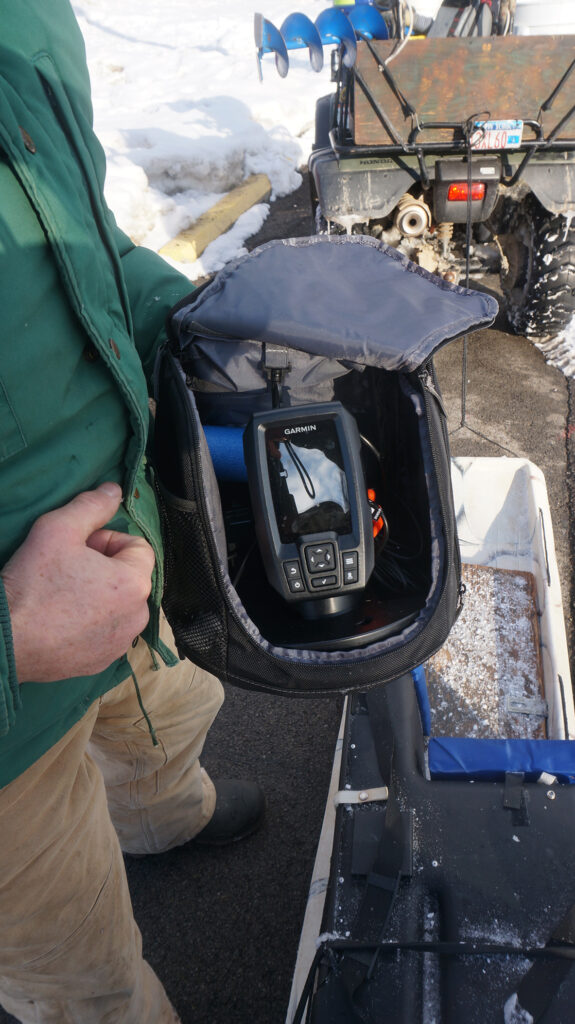
It was getting late in the day when I stopped, and people were starting to come to shore. “What,” I asked, “gets you out there on the ice?” The first person I encountered was Pennsylvania resident Larry Morrison, as he pulled his sled toward the Vitale Park parking lot. For Morrison, the answer to my questions was, unequivocally, “the fish.” When I asked why he drove to New York, he told me that “there are no fish in Pennsylvania; New York is where the fishing is.” For ice fishing, he usually goes to Silver Lake, and, sometimes, Conesus. Morrison also gave me some insight about what kind of fish one could expect to pull up from the depths: perch, blue gill, walleye, and (for those fishing further out) northern pike. He was one of many who told me it was a slow day. “That’s what you do when you make it big,” Morrison joked, pointing to a fellow ice fish enthusiast, as his ATV pulled up to unload.
The fish move slower and expend less energy this time of year, added Brian McBride, as he pulled up a screen and showed me how a Hummingbird Fishfinder blipped at the lure and would show another blip when a fish came near, making it possible to more easily entice the fish by putting the bait right there within easy reach. For McBride, tradition is the biggest lure keeping him out on the ice. McBride has been ice fishing since he was five years old—once you are hooked, you are hooked. This was not the first time I would hear this sentiment expressed.
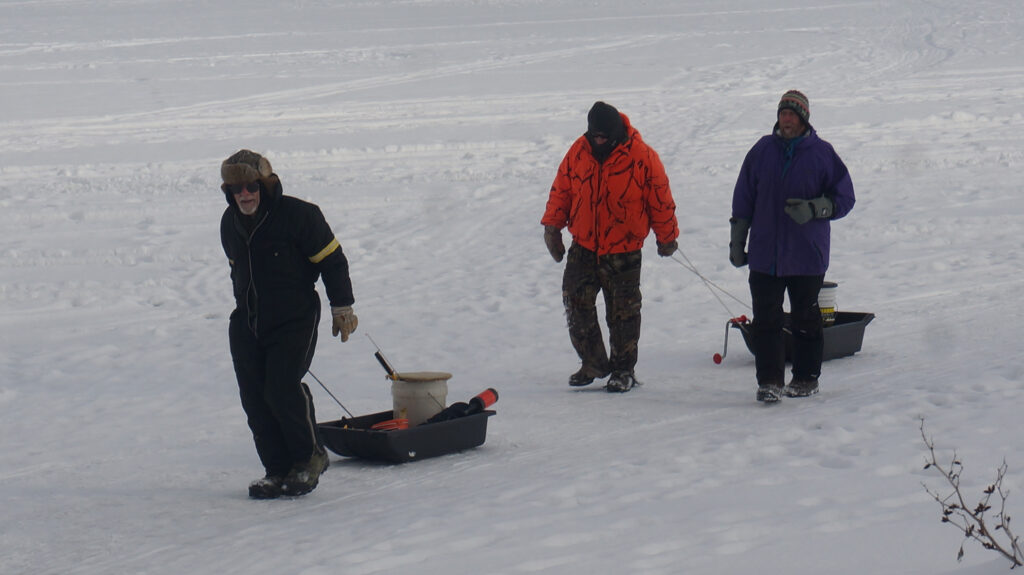
For some, like Tom Morsch, it’s all about getting out— “I’m just Sick and tired of being cooped up.” Morsch was out fishing with two friends (who by the sound of it are frequent companions on and off the ice). One friend chimed in that, “Tom calls, says it’s time to go, and we go.” “Really, it’s just nice to be outside.” It was evident that the three had had an enjoyable outing, but that maybe it was time to get inside. By this point, I was shivering and trying to tuck my hands into my warm gloves, while retrieving my fallen hood. But the sun was shining, and it was beautiful out there.
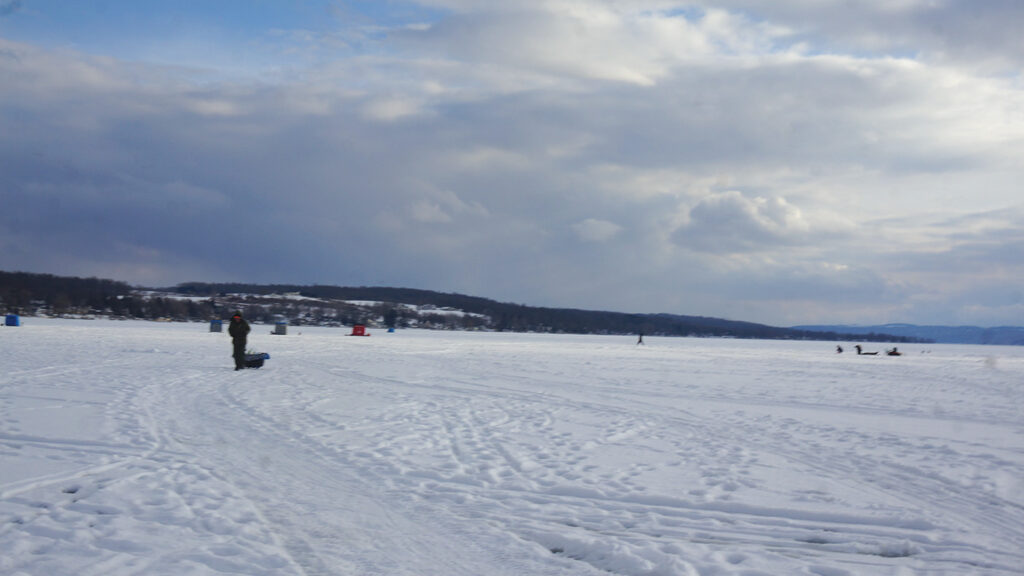
As I walked, finally, out onto the ice, I encountered one more person pulling his gear along the well-trod sled path that extended from the distant huts to the shore. Dansville resident Jerry Engler has been ice fishing for forty years. Like many I had talked to, it was a slow day. According to Engler, fishing will improve in a couple weeks, when the fish begin to spawn. As with many of those I spoke with, for Engler the quantity of fish is less important than the quality of the experience. Engler highlighted for me the line between old-school and new-school ice anglers. Although he has a fish finder, a gift from family, he did not have it with him. He often prefers a more essential set of gear. He also believes that since everyone is now using fish finders to find the fish, more limits may need to be placed on how many each person can take. People want more and more (fish as well as deer, which are also being hunted more with technologies that were not used when he started fishing and hunting). “What I catch goes to family, and if there is too much, I give it away to friends and neighbors.”
Not sure if I will get out on the ice this season, but I do love fish and can definitely imagine exploring it more (something I have not done since I went creek fishing as a child; so much has changed since then). I have to agree that getting out and enjoying all that this lake rich area has to offer—especially at a time when cabin fever seems a bit more entrenched than in many years—is a good idea for all of us. For everyone I spoke with, being out there is about way more than the fish. As we walked back toward the shore, Engler summed up well what so many of those I met found so luring about this icy outing — “It’s nice to get out of the house, to just get tied up with Mother Nature for a while.”